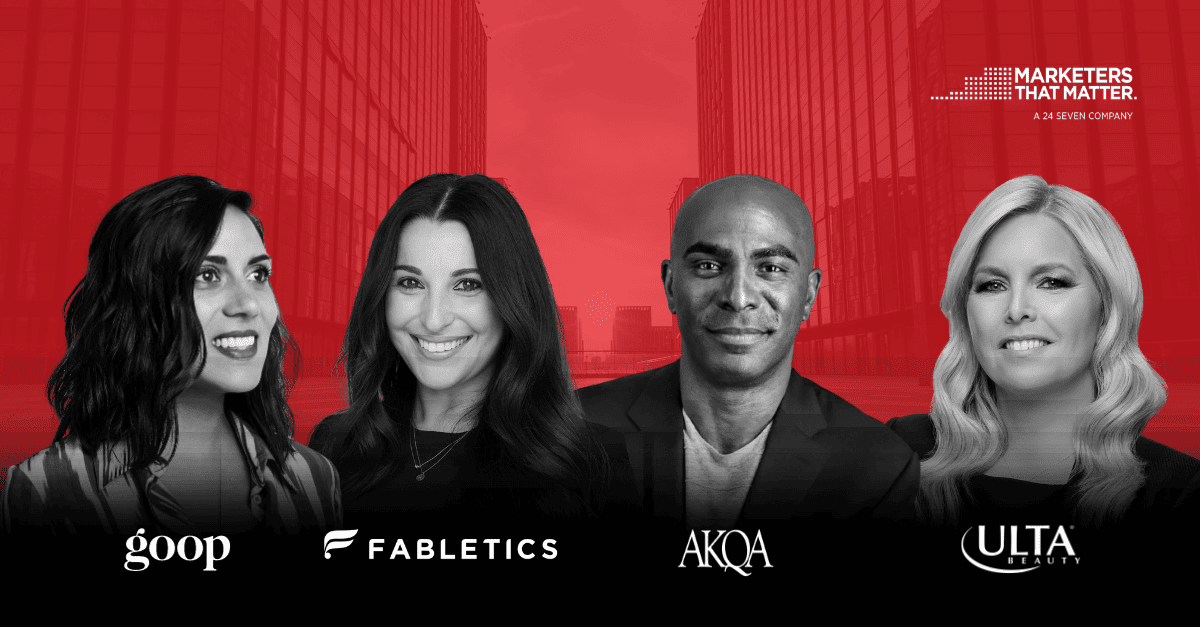Creators, creatives, ambassadors, influencers… what’s the difference between them all, and how do you engage them individually to create the right strategy for success? The lines can get blurry at times, and if marketing leaders aren’t in front of the future, they could miss out on a huge opportunity to drive authentic conversions for their brands. During our Los Angeles Forum at Snap Inc., we brought together four seasoned marketing veterans to bring insight to what’s happening in the Next Evolution of Creators and Collabs:
- Ilona Aman, CMO at Fabletics
- Jabari Hearn, Managing Partner, AKQA
- Noora Raj Brown, EVP Brand, goop
- Michelle Crossan-Matos, CMO at Ulta Beauty
In this energizing conversation (which you can also catch on the Visionaries podcast), they discuss the evolving creator economy and improving connections with their brand through authentic creator partnerships.
The ‘Above the Ground, on the Ground, and Underground’ Framework
Ilona Aman, CMO at Fabletics: When thinking about the creator community, it is important to consider it in terms of three categories: Above the Ground, On the Ground, and Underground.
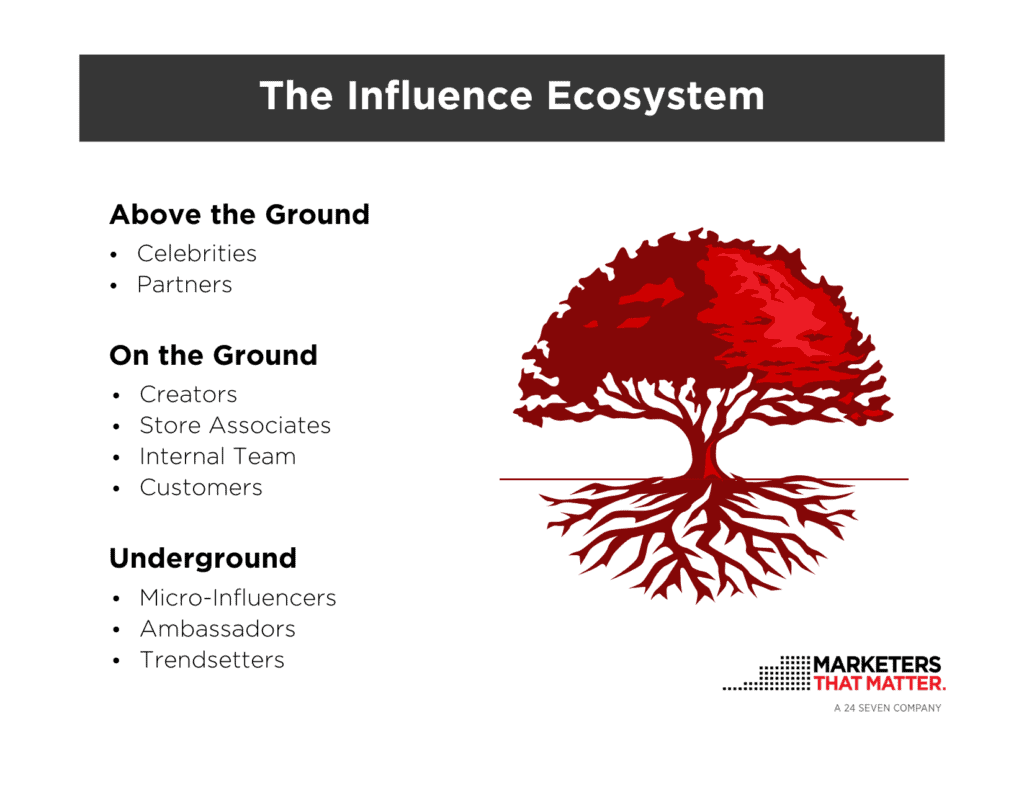
This approach, coined by David Shriver, helps shape the way you work with the creator community. For instance, if you are working with someone at the highest tier, such as a celebrity, you need to consider who your ‘on the ground’ creator is–someone who can authenticate your position, story, and product. At the underground level, you need to think about the micros. These are the people in the streets: the tastemakers, the trendsetters, and the shapeshifters. When you have an ecosystem of all these things working simultaneously, you can create magic. You can invite different consumers into multiple spaces, and you will see your brand trajectory take off because you are hitting different genres and areas at the same time.
Above the Ground
💡Keep it values-led and throw out the script.
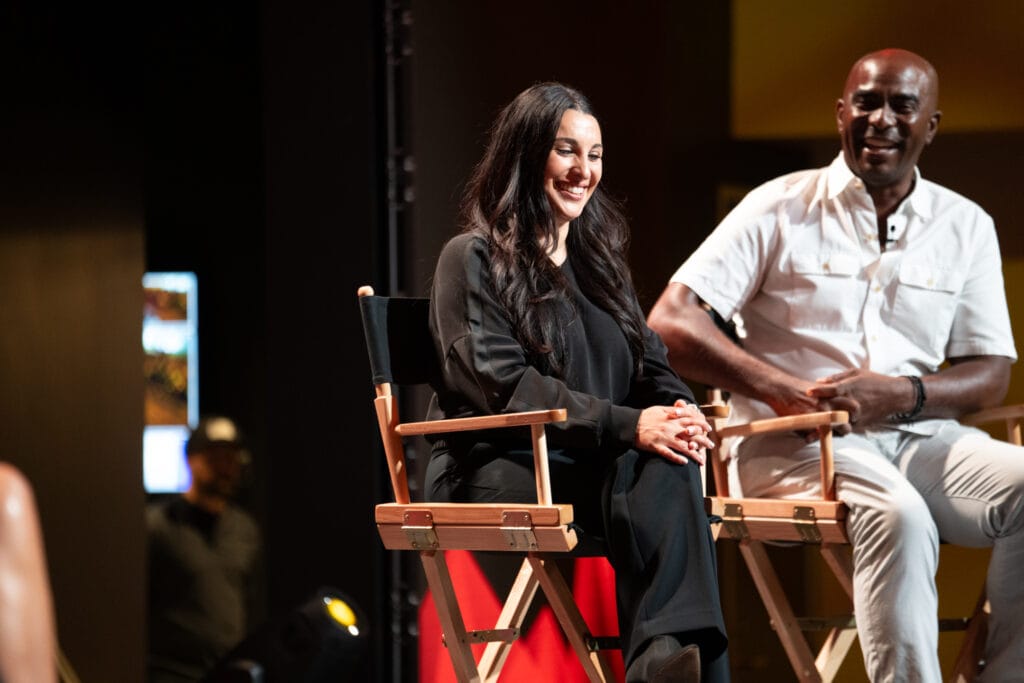
Ilona Aman, CMO at Fabletics: What makes relationships work in the long term, whether with a celebrity endorser, founder, or partner, is how their values and personal brand align with your brand and vice versa. With Kevin Hart, our relationship is seamless and effortless because we share the same values. Kevin believes that bringing joy and laughter to people’s lives will extend the longevity of their lives; everything he does is put through that lens. When we have campaigns or calls to action, or when he’s on tour, it’s part of an organic conversation. There’s no script; we don’t tell Kevin what to say. It happens because it’s real, and there’s no motive behind it. This creates a multiplying effect that will continue for generations to come.
💡 Mitigate key-person risk.
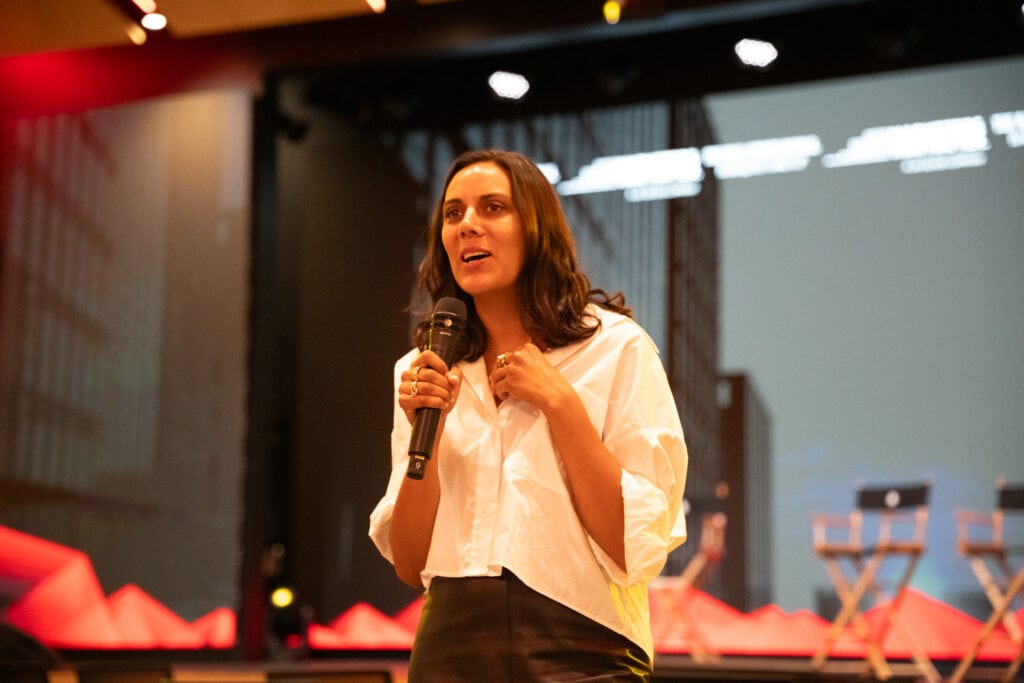
Noora Raj Brown, EVP Brand, goop: Even though Gwyneth Paltrow started goop and is a very effective CEO, she is not the face of the campaign in the way that a talent endorsement traditionally would be.
Instead, she focuses mainly on performance marketing metrics and discusses multipliers with me. People have come to goop since the beginning not only because of Gwyneth but also because of her taste; that’s where our focus has been and what we’ve doubled down on.
While her guidance may be a factor, the taste is not always coming from her. Gwyneth is still our original influencer, but we also work with others, from micro-influencers to celebrities like Tinx and Kourtney Kardashian.
We have 200 people working at the company, and we have made sure to make those other people more visible. We need to show that goop is for everyone. This is essential for scaling the brand, reducing key person risk, and building enterprise value. It can’t be just focused on one person; it has to be an ethos, and I am proud that we have achieved that.
On The Ground
💡 Tap into store associates for authentic influence.
Michelle Crossan-Matos, CMO at Ulta Beauty: Ulta Beauty is the largest beauty retailer in the country, with over 1,350 stores. We have 53,000 store associates who interact with beauty enthusiasts daily and help them become their best selves. Our associates are like our secret weapon, and they are often untapped. We have the classic approach, with a UB collective consisting of micro-influencers who do everything ordinary people do. We also have brand partners, like goop and others, who drive a lot of EMV. However, our associates are our secret weapon. They share our message in person and on social media and have their finger on the pulse of what’s happening in every state of the country. They help our guests in a very different way, and their authentic influence brings out the most joy.
💡 Empower associates to work their magic.
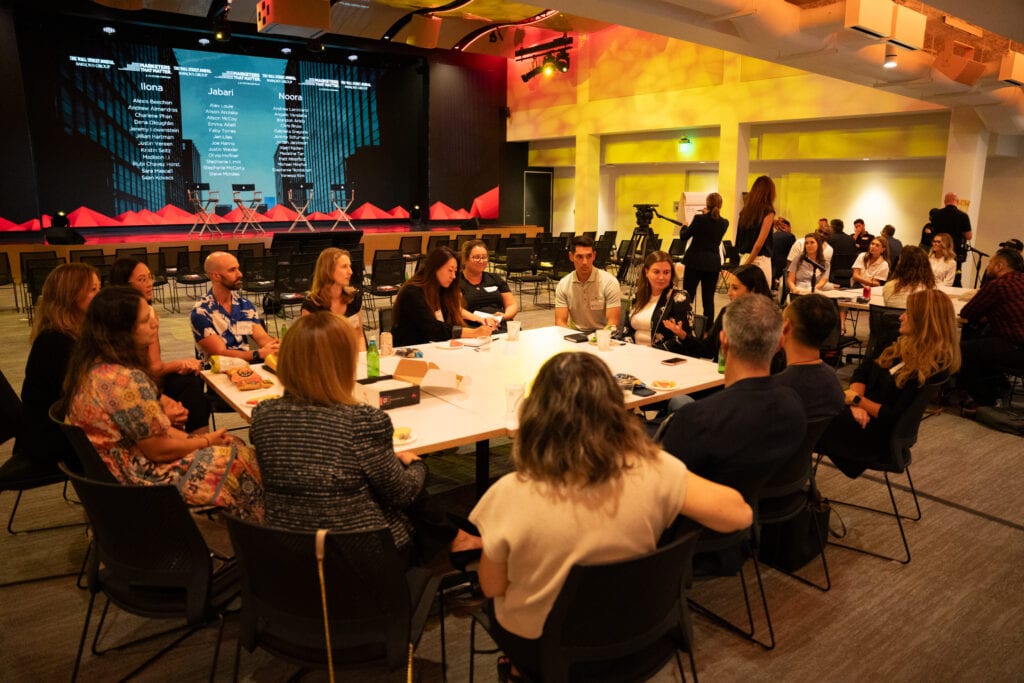
Michelle Crossan-Matos, CMO at Ulta Beauty: We’re currently determining how to communicate our brand’s voice to our store associates, what topics to discuss, when, and how to do it effectively, just like we would with any community manager. However, if we are too prescriptive, then what will we lose? Authenticity. As leaders, we need to be comfortable and brave enough to allow people to express themselves freely in a way they believe is best for their guests. That’s what’s critical. We value our associates and recognize that they are the driving force behind our business model. That’s why we invest so much in them. We have an event called FLC once a year, where we bring everyone together and celebrate them because these are the people who make all the difference. If we try to control and contain them, we’ll never achieve the magic we see in our stores.
💡 Let creators enhance brands, and brands elevate creators.
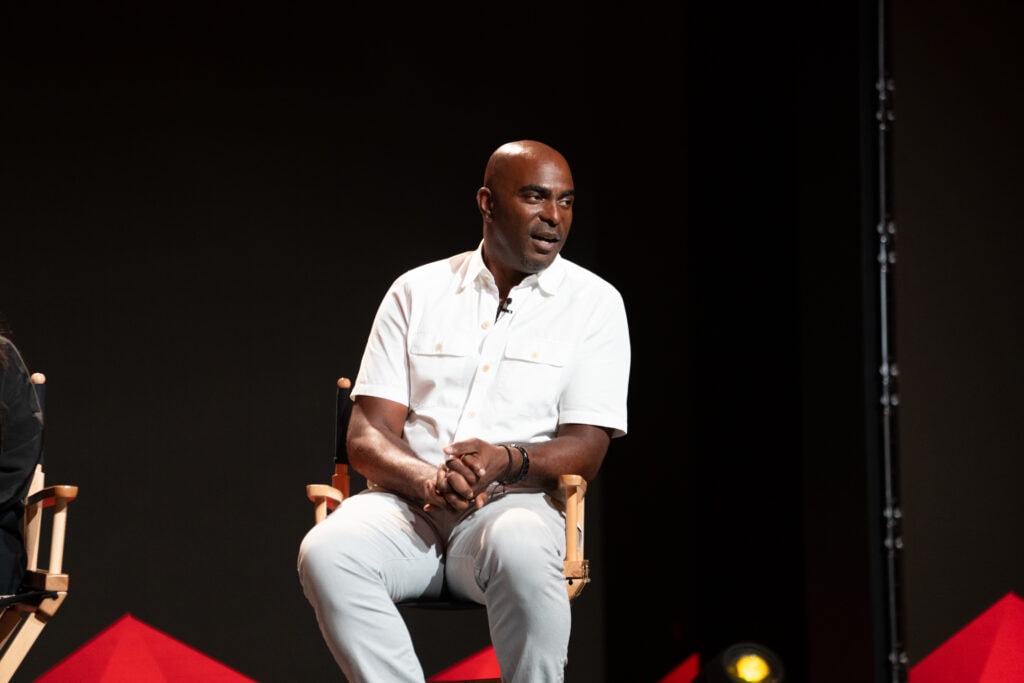
Jabari Hearn, Managing Partner, AKQA: When I worked for Will Smith at Westbrook Media, his number one objective was to gain relevance online. While he had a lot of great ideas, partnering with people who were already relevant online was the best way to achieve that goal. To do this, we looked at who was already doing amazing things on platforms like Instagram and Snapchat and who could connect with our brand and audience to tell the stories we wanted to tell.
There are all kinds of creators, and the ones that often get forgotten are visual creators–you might not know their names, but you’d recognize their work. A great example is Chris Ashley, a visual creator who collaborates with Will. He is relevant, cool, and thumb-stopping when you’re browsing Instagram. Will discovered that he could leverage these types of creators while giving them the credit they deserved. By tagging them and giving them a platform, they became just as much a celebrity about the content as Will was.
In our industry, we often forget about the makers. While commercials and ads may have credits, the people who make them don’t always receive the recognition they deserve. Will saw an opportunity to change this by giving credit where credit is due. By doing so, we can create a whole new fan base for these creators and provide them with new opportunities, ultimately creating a more inclusive and collaborative industry.
Underground
💡 Craft impactful visibility without compromising self-selection.
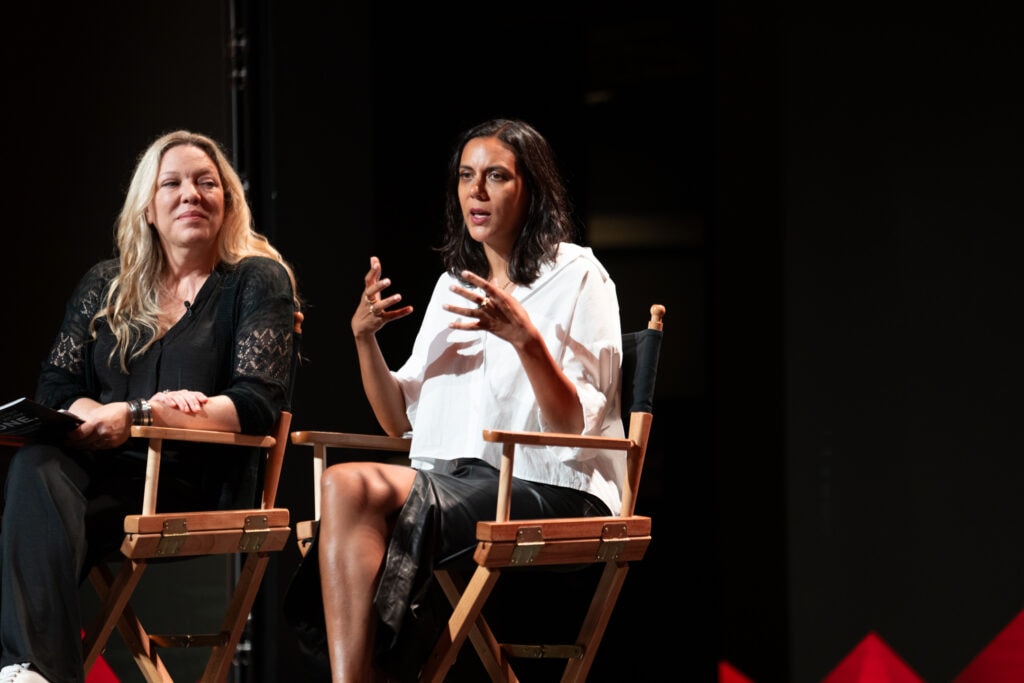
Noora Raj Brown, EVP Brand, goop: 90% of what we do at goop is organic. We have an ambassador network of about 150 women who embody the goop perspective and connect to different parts of the brand.
We started the ambassador program in January 2023, aiming to make it big enough to have a visible impact but not too big that it loses its self-selecting nature. We wanted people who genuinely loved our brand to participate. Most of the participants were people we already had relationships with.
Attribution is something we think about a lot since our work is organic. Not everyone will use a link, and it’s not always transactional. A lot of it is brand awareness, and we have to have faith that it’s working. We double down on the affiliate side to prove how the influencer ambassador program is scaling. Because affiliate revenue is scaling, we hypothesize that the rest is working, too, even if it’s harder to attribute.
Important Tips to Keep in Mind
💡 Break away from traditional boundaries of creatives.
Jabari Hearn, Managing Partner, AKQA: The first thing we need to do is to break away from our traditional boundaries of creatives. Roles like creative director, creative, and so on are quite limiting. However, consider all types of people who create–scriptwriters, set designers, editors, and so much more. Imagine all the creative individuals you could partner with to accomplish whatever you need to do. This changes your perspective on who you bring into your organization–a creator versus a creative. A creator encompasses a much wider range of abilities, making them more intriguing, interesting, and relevant to today’s market.
💡 Give up some control of the brand.
Noora Raj Brown, EVP Brand, goop: When I started my career, marketing was all about controlling your message, your outputs, and which channels to go on. Recently, some brands have given up a little bit of that control, which is part of what makes working with the creator economy exciting. When you let the brand go a little bit, beautiful things can happen. It’s about creating content that speaks to people, and that’s not always going to be perfect. Sometimes, it can be messy and chaotic, but that’s how real, lasting relationships are created with customers.
💡 Mix in-house and external talent.
Michelle Crossan-Matos, CMO at Ulta Beauty: If we have creative people in-house, how can we continue inspiring and encouraging them on their journey? Traditional marketing departments are skilled at creating brands and strategizing, but truly creative individuals possess a unique skill set that many CMOs may not have much experience with since they have outsourced such tasks for years. However, we have learned that having a mix of in-house and external talent is the most effective approach. This will undoubtedly present a challenge, if it has not already, in the coming years.
💡 Leverage the broader range of creativity that people possess.
Ilona Aman, CMO at Fabletics: The framework of “above, on, and under” removes the limitations of labeling individuals as content creators, influencers, or ambassadors. By thinking this way, we can create more expansive relationships with creators that benefit us. We have associates who interact with consumers regularly. Yet, we classify them as retail associates and fail to leverage their valuable content, input, and insights. They are our ambassadors, and we should think about them more broadly rather than limit them to their classification. While some may feel that thinking in this way lacks focus, it’s important to fight for this space and avoid being too systematic, which can sometimes be counterproductive.
Meet The Visionaries
Ilona Aman, CMO at Fabletics: Ilona Aman is a dynamic, creative, and high-impact global brand marketing leader with over 20 years of strategic, innovative, and measurable brand marketing experience. She has a strong focus on lifestyle, entertainment, sports, and consumer marketing. Prior to her role as CMO at Fabletics, Ilona lead the brand marketing initiatives, communication, strategy, and creative for the top collaborators (Beyoncé & Pharrell) at Adidas as the Global Brand Director in the Lifestyle category. Before that, she worked for Nike as a Retail Brand Marketing Specialist.
Jabari Hearn, Managing Partner, AKQA: Jabari is a forward-thinking marketing executive who connects mission-driven brands with urban culture to reach the next generation of consumers. He was formerly Westbrook’s Senior Vice President of Marketing and Entertainment, serving Will Smith and Jada Pinkett Smith’s production company. Jabari has an extensive background in advertising, led global marketing for mobile hardware at Google, spent a decade at Nike, and co-founded Monday Night Mentorship, built to coach and mentor marketers of color.
Noora Raj Brown, EVP Brand, goop: As a member of the executive team at goop, Noora oversees brand and integrated marketing, corporate positioning, talent outreach, television production, social media, influencer marketing and press strategy for thebrand and all it’s initiatives. She also serves as chief spokesperson for the company and CEO. Prior to goop, Raj Brown worked in various creative industries, most recently at Time Inc. Previously, she served as the Director of Lifestyle & Special Events at Alison Brod Marketing & Communications. She has held positions in special projects and communications at Thompson Hotels and talent public relations at BWR. Noora is also an accomplished freelance writer, focusing on travel, culture, and art for publications such as Departures, Wallpaper*, Food & Wine and InStyle.
Michelle Crossan-Matos, CMO at Ulta Beauty: Named Chief Marketing Officer of Ulta Beauty in January 2023, Michelle oversees workstreams across integrated marketing, creative, store design, member loyalty, public relations, consumer insight, and UB Media, the company’s retail media network. Before joining Ulta Beauty, Michelle served as Chief Marketing, Citizenship & Communications Officer at Samsung Electronics America. Prior to that, Michelle held various leadership roles with Samsung, Vertu, and Procter & Gamble, where she gained extensive experience in beauty and personal care. Recognized for being a change agent who is strategic yet a hands-on pragmatic problem solver who delivers on complex business challenges by creating value, and building people and organizations for turnarounds and sustainable growth.
Marketers That Matter® is a community of top marketing executives coming together to pioneer the future of marketing, sharing real-time experiences, and solving current challenges.
Our parent company, 24 Seven, specializes in helping you find exceptional marketing and creative talent for your teams.

